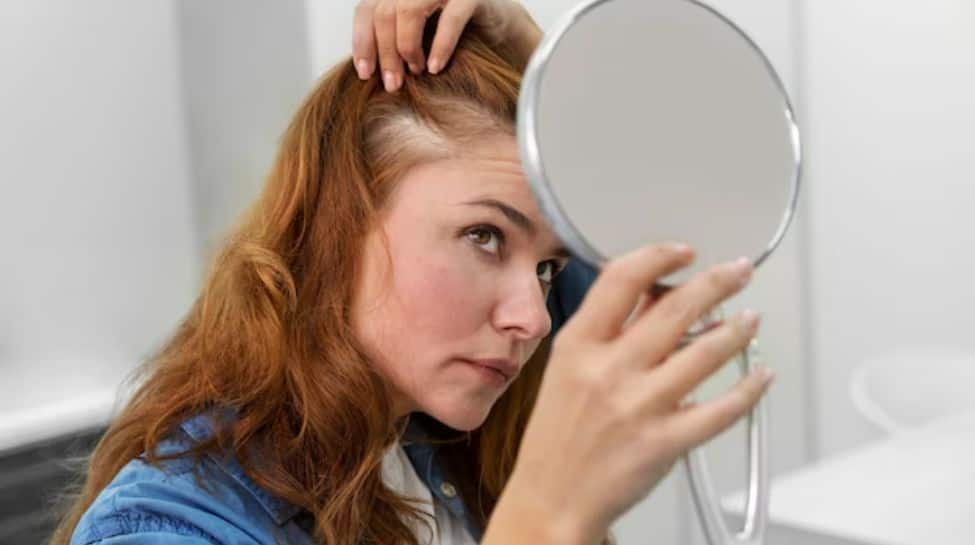When it comes to dealing with hair loss, people often consider choices between non-surgical options and hair transplant procedures. Each method offers specific benefits, and the right choice depends on factors such as severity of hair loss, personal preferences, budget, and desired results. Non-surgical options, such as medications, topical treatments, and low-level laser therapy, offer less invasive options for those seeking gradual improvement without the need for surgery. Hair transplants, on the other hand, provide a more permanent and dramatic solution by transferring hair follicles to thinning or balding areas. Understanding the differences between these two approaches can help individuals make an informed decision tailored to their specific needs.
Hair loss is a highly personal concern, affecting appearance and self-confidence. According to Dr. Rakesh Jangra, dermatologist and hair transplant specialist, Raksha Aesthetic Clinic, hair loss should be addressed with specialized solutions that meet the hair loss stage and expectations of an individual. Here, he shares insights into how non-surgical treatments and hair transplant can be effectively combined to achieve the best results.
Non-surgical options: early intervention is more effective
If baldness or excessive hair loss is still in the early stages, treatment as a non-surgical option can be quite effective. “Early intervention is important to preserve and grow existing hair,” says Dr. Jangra. “Non-surgical treatments aim to nourish the scalp, stimulate follicles, and prevent further loss.”
Some of the most effective non-surgical treatments include:
1. PRP (Platelet-Rich Plasma): “PRP harnesses your own body’s healing powers. Concentrated platelets injected into the scalp stimulate hair growth and increase density.”
2. GFC (Growth Factor Concentrate): “This advanced version of PRP delivers specific growth factors directly to the hair follicle for improved results.”
3. PDRN (Polydeoxyribonucleotide): “It is extracted from salmon DNA. PDRN revitalizes the scalp and promotes healthy hair through anti-inflammatory properties.
4. Mesotherapy: “It involves micro-injections of vitamins and nutrients directly into the scalp to nourish the hair follicles.”
5. Exosome Therapy: “Exosomes are revolutionary in reviving damaged follicles and promoting growth factors.
6. Low-Level Laser Light Therapy (LLLT): “This painless light therapy increases blood flow to the scalp, supporting hair follicles.”
7. QR678 Therapy: “QR 678 is a scientifically validated treatment that gives excellent results for early stage hair loss.”
8. Regenera Activa: “This procedure uses micrografts from the patient’s scalp to restore and activate natural hair growth.”
9. Dermapen4: “Microneedling resurfaces the scalp by allowing the growth serum to increase and increase collagen levels.”
Who can benefit from non-surgical treatment?
According to Dr. Jangra, “If hair fall or thinning has increased, it is time to adopt non-surgical treatments. Non-surgical treatments are effective if the hair follicles are still active. Regular Follow-up and proper care is required.” Expectations because these treatments take time and results may vary from person to person.”
Hair transplant: miraculous cure for baldness
Such treatments are usually not enough for people who suffer from severe hair loss or are even bald. Hair transplant procedures are the most viable option. According to Dr. Jangra, “Hair transplant is successful only when there are sufficient number of healthy follicles at the donor site. When done correctly, the results are natural and permanent.” There are two methods:
1. FUE (Follicular Unit Extraction): “This technique involves collecting individual follicles and transplanting them into the bald area, creating minimal scarring and faster recovery.”
2. FUT (Follicular Unit Transplantation): “In this technique, a strip of scalp is removed for the purpose of harvesting follicles. This technique is beneficial for those who require more grafts.”
Dr. Jangra emphasizes the importance of having realistic expectations. “Non-surgical treatments cannot replace hair in bald areas, but they can make existing hair stronger and bigger. Hair transplantation, on the other hand, can restore hair in bald areas but it requires the availability of a healthy donor area. “Depends on.”
Dr. Jangra bases his treatment on individualization. “Each patient requires a different type of treatment plan. For the earlier stages of hair loss, treatments such as PRP, GFC, or Regenera Activa may work well. When it comes to advanced stages, “Combining hair transplants with post-transplant maintenance does the trick, and the results are permanent.”
role of professional counseling
Again, navigating through hair loss treatment can be overwhelming. According to Dr. Jangra, one should seek out a qualified specialist who can evaluate the scalp to understand the cause of hair loss and recommend the most appropriate treatment. “With the right diagnosis and timely intervention, we can achieve remarkable results while aligning with the patient’s goals and expectations,” he concluded.
